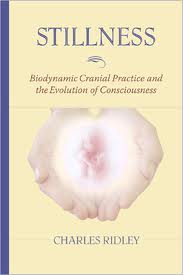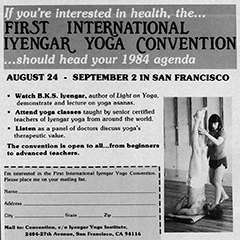Homework for Weekend 1:
Read Adyashanti’s “The Way of Liberation”
Write a list of possible goals you would like to accomplish in the course.
Keep practicing at home. Bring Questions.
Primary postures will be standing poses, dog pose and variations, restorative poses.
Read Samyama in Asana, Parts 1 and 2
Theme for weekend # 1. What is the nature of spiritual practice?
In a nutshell, it is as easy as 1,2,3.
1. Being able to differentiate and discriminate between:
the unbounded, unchanging all pervasive Absolute (Purusha and Drashtuh, the Seer in Patanjali’s  Yoga Sutras, ‘Now’ in Eckhart Tolle, Atman/Brahman in Vedanta, ‘Being’ with Adyashanti, etc.) and the transient, constantly changing world of forms (Prakriti, creation, time and space, etc.).
Yoga Sutras, ‘Now’ in Eckhart Tolle, Atman/Brahman in Vedanta, ‘Being’ with Adyashanti, etc.) and the transient, constantly changing world of forms (Prakriti, creation, time and space, etc.).
2. Realizing, recognizing, remembering that the true nature of ‘you’ (the ‘I am’ we all experience) is the infinite unbounded, unlimited Purusha and not anything created in the realm of thought and posing as you.
3. Realizing that creation, the world of form, prakriti, is never separate from the infinite, just as the ring is never separate from the gold, even though ‘ringiness’ is different from gold. In other words, differentiated does not mean separate in this case. Samsara is nirvana; nirvana is samsara.
When the Hsin Hsin Ming starts to resonate with you, you will know you are on the right track! See also Bhagavad Gita, which we will study later in the course.
Also, emotional regulation is the beginning of this process of self realization, as the mind has to be able to settle down to begin to ‘see’ the nature of what is. Emotions are relational and we will spend one of the weekends developing this further. Patanjali’s Yoga Sutra I – 33 is a beautiful teaching on emotions.
Samadhi, or sustained focal attention, is the practice of settling the mind onto very specific streams of energy and information. The hub of awareness meditation, from Dan Siegel, allows us to see how attention can be moved and sustained in different ways. It can be directed inwardly of outwardly through various portals to learn about the world of form. Or it can rest in, or dissolve into itself. Then, we rest as purusha, pure awareness, the infinite, even if only for a split second. Patanjali, in sutra I-3, says yoga is resting as the infinite, stably. Tada, then, when in ‘yoga’, the true nature, sva-rupe, of the Seer, drashtuh, is stable, ava-stha-nam. Stable, from the Sanskrit root ‘stha’, is a key word that will show up again and again in spiritual teaching and neuroscience. But just a tiny taste is all it takes to propel the process along.
Patanjali’s Yoga Sutras Homework: Find one or two that intrigue or puzzle you. Be practical, not theoretical. Relate the practice/instruction to energy as: too much/too little/just right! Connect to your on-going emotional state and integrate into sustaining emotional equilibrium (samatvam).
For the somatic or embodied work we do, attention is brought to the streams of proprioception (feeling the inner physiological movements of fluids,  cells, breath, heart, peristalsis etc.) and kinsethesia, the felt sense of where the body is in space and where the various joints, limbs bones are in relation to each other.
cells, breath, heart, peristalsis etc.) and kinsethesia, the felt sense of where the body is in space and where the various joints, limbs bones are in relation to each other.
For most beginners, the proprioceptive stream is hard to find. Following the breath is the main introduction. In asana, kinesthesia can be amplified by moving, slowly and mindfully, in and out of the poses. This is ‘not necessarily’ athletic, dance or gymnastic in nature as our intention in yoga is to feel the movements, track them carefully, expand feeling and open to the proprioceptive pathways. This can certainly be the foundation of dance and other athletic endeavors.
We first learn to differentiate ‘too much effort’, usually felt as connective tissue tension, and tightness of the breath and sense organs; and ‘not enough action’, usually felt as heaviness, dullness, sluggishness, spaciness. Just right feels brings a sense of flow, of some ease, less effort, more balance, of a presence that allows us to listen to the proprioceptive and kinesthic streams and let the intelligence guide the practice from these information streams. This is quite different from trying to remember instructions and will the body into some abstract notion of what the pose is supposed to be.
 We begin to identify pathways of energy in the body where the energy flows effortlessly and we works with these, explore them in different poses, discover ways to enhance the strength of the highways, and notice habits that hinder or inhibit flow through them. Sacred Geometry describes lines and circles of energy.
We begin to identify pathways of energy in the body where the energy flows effortlessly and we works with these, explore them in different poses, discover ways to enhance the strength of the highways, and notice habits that hinder or inhibit flow through them. Sacred Geometry describes lines and circles of energy.
The primary line of energy is along the spinal axis, through head and tail, along the chakra channel, and also out through hand and feet, arms and legs. This is the first ‘masculine’ line of energy. We find the feminine ‘circles’ in  movement, first through the hip joints; the flexion/extension circle of forward and backbending, then the ‘fish body’ or lateral flexion circle of ardha chandrasana, trikonasana, and parsvakonasana. And finally the rotation circle of twisting.
movement, first through the hip joints; the flexion/extension circle of forward and backbending, then the ‘fish body’ or lateral flexion circle of ardha chandrasana, trikonasana, and parsvakonasana. And finally the rotation circle of twisting.
When working with lines, we look for opposite action along the line, like the energy of the arrow when a bow and bow string are move in opposite  directions. From here we find the fulcrum of balance, where the two opposite actions begin to work as one to create a dynamic charge of energy. We can oscillate or pendulate back and forth, or sustain the dynamic stillness of the archer just before releasing the arrow.
directions. From here we find the fulcrum of balance, where the two opposite actions begin to work as one to create a dynamic charge of energy. We can oscillate or pendulate back and forth, or sustain the dynamic stillness of the archer just before releasing the arrow.
In the circle, the balance is between expanding and condensing the circle, or as Iyengar describes in “Light on the Yoga Sutras”, the centrifugal and centripetal forces. The expansion field of the centrifugal force opens from the center and expands outward.  This is difficult for beginners who are more likely to contract the body inward to find stability. Centripetal energy is not contraction but a condensing inward, counter balancing the outer centrifugal energy. Again these can oscillate, like in the action of the lungs in breathing, or can be sustained in a dynamic stillness.
This is difficult for beginners who are more likely to contract the body inward to find stability. Centripetal energy is not contraction but a condensing inward, counter balancing the outer centrifugal energy. Again these can oscillate, like in the action of the lungs in breathing, or can be sustained in a dynamic stillness.










